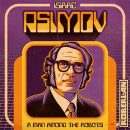Everything Ancient Is New Again: The Rise and Future of Paranormal Sex
Spectrophilia isn’t just a kink—it’s a cultural phenomenon and maybe a sextech opportunity

For less than the cost of a decent vibrator, you can purchase The Rook by GhostStop, marketed as “the EMF meter built especially for ghost hunting” and you don’t have to be a paranormal investigator to require a gadget designed to detect “small changes in electromagnetic energy…so you can be alerted to a presence and track down the source easily.”
Not sure if you’re interested? All it takes is one too many nightly visits from a succubus, incubus, dead spouse, or a hundred-year old ghost straight from a Welsh painting.
It’s unclear whether incidents of spirit sex are on the rise, or if people—including celebrities such as Ke$ha—are more open about their experiences. Unlike the era of European witch persecutions, when sex with a devil or demons was a capital offense, it’s safer now to divulge unusual sexual experience in some parts of the world—unless there’s a moral panic brewing. Contemporary accounts are strewn throughout the internet and diverse academic fields are bursting at the seams.
However, spirit sex is not easy to prove. Hence, an EMF meter. Keep one handy on your bedside table.
Spectrophilia, spectrosexuality, or just plain bonkers?
Some people have a kink for ghostly erotic encounters and may identify as spectrosexual. Others may be part of a spiritual, religious, or cultural tradition that accepts the existence of non-corporeal trysts and relationships with deities, spirits, or ghosts. But for most people in contemporary Western cultures, an erotic encounter with something invisible but physically tangible is unexpected, unnerving, and often even frightening.
RECOMMENDED READ: Artificial Intelligence: What’s Parasocial Love Got to Do With It?
Those who haven’t experienced such things often mock the ghost-ridden as having a screw loose, especially when such accounts are delivered via tabloid publications.
However, once the sex tech entrepreneurs figure out how to bluetooth the EMF meter
to the vibrator, and toss in AI technology for good measure, ghost sex may become all the rage. In the meantime, let’s explore a few other kinds of non-corporeal contact.
Hallucinations of widowhood
Though sexual aspects are not generally noted in the research, there is ample documentation for a special type of spectral intimacy: people who report after-death contact with spouses and lovers. Such contacts have been called hallucinations of widowhood: continuing bonds of bereavement (CB); sensory and quasi-sensory experiences of the deceased (SED); and after death communication (ADC).
One of the first studies took place in 1971. 227 Welsh widows and 66 widowers were interviewed and almost half reported “hallucinatory experiences of their dead spouse.” In1985, US researchers also documented “hallucinations of widowhood” among non-demented residents in two nursing homes.
SED includes many kinds of sensory experiences. In 2024, UK researchers published a systematic review of 79 studies and six data-bases (out of a total of 319 screened studies) and found:
…Visual, auditory, tactile, and olfactory features, or more general sense of the deceased being somehow present or nearby. SED includes seeing the deceased appear, receiving communication from them, hearing their voice, or sensing their presence.
These phenomena may be easier for the general public to accept, due to social empathy for those bereaved.
Chatbots of the Dead
In 2020, European researchers surveyed 310 “older widowed participants” and identified four major factors which predispose people to SED after a loved one dies:
Prior experiences of SED in the context of previous significant bereavements, a history of interpersonal trauma, high pre-death relationship closeness, and stronger religious/spiritual worldview.
The researchers considered SED to be “an interpersonal experience” and concluded “SED should not necessarily be considered an indication of neurodegenerative or psychiatric diseases.”
But what about a surviving partner who reacts to experiences of SED and decides to continue their relationship with a semblance of the deceased via chatbot? Lucy Osler, co-author of a study, “Communing with the Dead Online,” sees this as helpful. She told Coda:
It’s about readjusting to a world where you’re very aware that they have died, without letting go of various habits of intimacy. You don’t have to just move on in a very stark sense. We can have a kind of nuanced and ongoing adjustment to someone’s death and take time to emotionally adjust to the absence we now feel, as we learn to inhabit the world without them.
Unfortunately science lacks information about bereaved people who have chosen to rekindle the sexual aspects of their former relationship, using AI.
Moving on from SED, what about the other categories of sexy paranormal or supernatural incidents?
Night terrors
Night terrors–also known as sleep paralysis–are a phenomenon noted in sleep studies. They are the commonly accepted explanation for folklore about being hag-ridden and fears of being ravished by an incubus or succubus. The sensation includes a feeling of paralysis and being pressed or held down by something unseen, usually on the edge of waking up. Feelings of sexual contact may or may not be part of the experience. Many people find these nonconsensual and terrifying.
The good news is that science now understands the mechanisms of sleep paralysis so, no, this particular phenomenon is really not spirit sex—consensual or not—after all.
When spirits get frisky
There are other kinds of ghost trysts, however, and prior discussions of consent and boundaries don’t seem to be part of the mix. Many of the current “I’m having sex with a ghost” stories seem to be in that category. Usually a sneaky spirit shows up once or several times but eventually ghosts the human, never to appear again, leaving heartbreak or relief in its wake.
The Dr. Wanda Pratnicka Center, which specializes in spirit attachment removal, states on its homepage “Spirits can only touch us in this way if we have not learned to manage the currents of our own sexual energy.”
But, contrary to this assertion, plenty of people have sought intimate spirit contact. Mystics such as the Catholic St. Teresa of Avila (1515-1582) and the Hindu poet/princess Mirabai (b. circa 1498)—devoted and married to the god, Krishna—wrote passionately of their relationships to deities. Ida C. Craddock (1857-1902) and Victoria Woodhull (1837-1927), both advocates for women’s rights and sexual freedom, claimed to have had spirit lovers.
Meanwhile, some contemporary practitioners of neopaganism, Western occultism, and other traditions may seek these experiences intentionally. Sexual spirit contact may take place in dreams, meditation, ritual or simply in bed.
Scholars note spirit sex and marriages are often accepted in traditions such as Voudon, or feared as deviant in other traditions. For example, Nathaniel Homewood, author of Seductive Spirits: Deliverance, Demons, and Sexual Worldmaking in Ghanaian Pentecostalism, has even coined the term, pneumoeroticism, to “interpret sexual relationships between bodies and spirits.”
Just another color in the rainbow of human sexual behavior
Given the above, maybe the actual explanation for our cultural obsession with human/spirit love and sex is because it happens. From myths, folklore, and children’s fairy tales to vampire heart throbs on the screen of your choice, paranormal romances are a popular staple of literature, media, music, and visual art. Fantasy and romantasy genres are saturated with such relationships, though the romantic partner is usually presented as having some degree of corporeality.
This is an era where, in some countries, ordinary people and even celebrities like Ke$ha and Natasha Blastick can talk openly about their spectral experiences without risk to life and limb, but also not without ridicule.
From my vantage point as a sexologist, I feel we need to stop positioning human/spirit intimacy as just another sexual sideshow for public consumption. It’s clear the bandwidth of human sexuality includes desire for sex with ephemerals, even if we don’t understand the paranormal aspects yet. To move forward we need reputable, peer-reviewable studies of the sexological aspects of sensory experiences with the deceased: who is actually doing what with their deceased spouses and how do they feel about it?
We also need better adult sex ed on this topic. For example, when asked about ghostly sexual encounters, an advice columnist from Vermont, known as The Reverend, didn’t miss a beat, recommending “sage and white candles” for safer sex, “just in case.” Not bad, but he should have added that it’s best to avoid smudging with endangered white sage, and use black or garden sage instead.
As for me, I’ll consider adding an EMF meter and a cheap ghost box to my “toys most wanted” list as soon as sex tech catches up and develops a Bluetooth connection from the EMF meter to my Lelo Enigma Double Sonic Massager.
Image source: A.R. Marsh using Ideogram.ai and Leonardo.ai

















